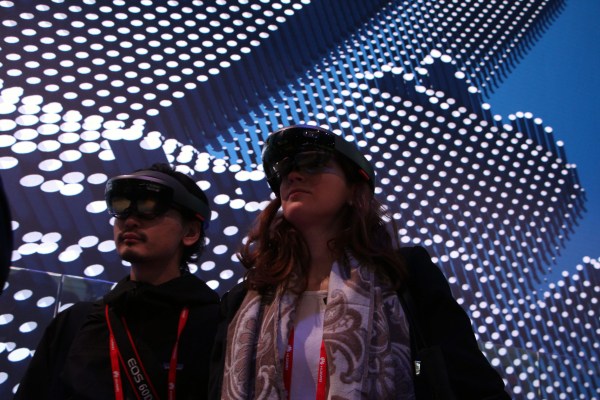Mobile World Congress is more than just a product showcase. The event is a handy snapshot for the current state of the smartphone industry, and as with CES, the show’s beginning of the year slot is ideally timed to offer a bit a preview of the year to come.
Some trends were hard to miss. 5G was a big buzz word at the event, in spite of the fact that no one is quite sure what it means. Auto companies have made some major headway at the mobile show, perhaps one day rivaling their presence at CES. Retro phones are definitely a thing now, and as is announcing that you’ll be making an announcement.
There were a few more worth noting, as well.
The industry has seemingly already moved on from the Note 7: I had two conversations before boarding my flight home from Spain yesterday. One was with the cab driver and the other with the woman behind the airline’s front counter. Both brought up the Galaxy Note 7. That’s roughly the same amount I heard the phone discussed my entire week at MWC.
Samsung once again made reference to the debacle at the beginning of its press conference, repeating it CES apology along with a somewhat tone-deaf video of the company’s super sexy testing facility set to “Give the People What The Want” by the O’ Jays. It was a weird choice. LG meanwhile, discussed its rigorous battery safety testing and increased walling to protect accidental contact between positive and negative charges – precisely the problem Samsung encountered with the Note.
It was pretty clearly a thinly veiled swipe at the follow South Korean manufacturer, but companies otherwise seemed to go pretty easy on Samsung in this first MWC since the Note 7 fiasco. The same definitely can’t be said for Barcelona’s cab drivers.
Smartwatch excitement has died down: Companies haven’t exactly been rushing to get back on board with smartwatches. CES didn’t offer much from the category, and Huawei had the only notable launch at MWC this week. It’s no surprise that brands have been extra cautious as sales have slowed, arguably hitting a saturation point.
But the launch of Android Wear 2.0 earlier this month seeming hasn’t inspired much additional confidence, as Huawei this week became the next company to embrace the wearable OS with a new piece of hardware. Perhaps this is confirmation of yesterday’s report from IDC that the wearable industry is dying so much as shifting, but as a bell weather for the space at large, this year’s MWC didn’t seem particularly bullish on the space moving forward.
Smartphone makers are betting big on cameras: Android phone manufacturers have always had trouble distinguishing themselves from the pack, which has certainly contributed to the notion of a mobile specs arms race. These days, cameras seem to be the primary battlefield on which that war is largely waged. Not surprisingly, that was most of what Sony spoke about at its press event. After all, if you’re providing the camera tech for much of the rest of the industry, at least you can ensure that your devices get it first.
China’s top smartphone maker Oppo even went as far as eschewing a device launch in favor of showing off a dummy prototype of its new camera zoom technology. Photography was also a driving factor in LG’s decision to go with a new aspect ratio, allowing users to shoot and preview square photos at the same time.
HDR is the new 4K: That’s pretty much it.
If all else fails, show a prototype: Oppo’s big announcement was a technology contained in a black box. Ditto for ZTE, whose own big unveiling, the simply named Gigabit Phone was more proof of concept than anything else, happy muddying the waters in the lead up to 5G with its confusing and difficult to pronounce “5uper Generation” tagline.
Motorola, too, while actually announcing its new G5 handsets, took some wind out of its own sails with a parade of prototypes.
